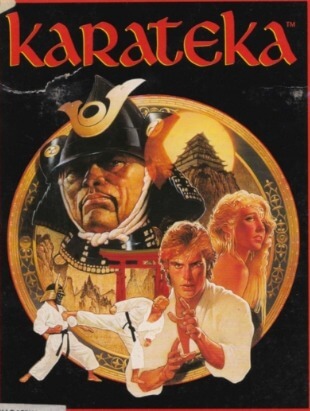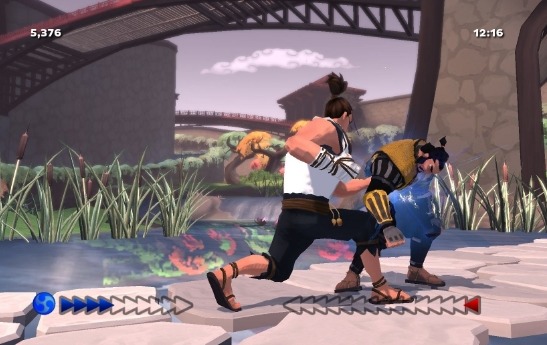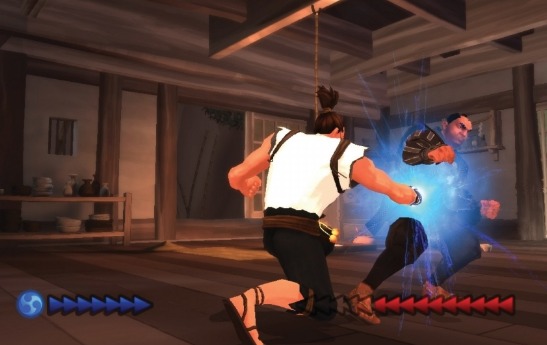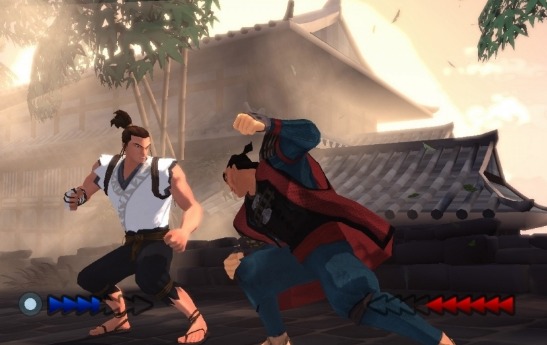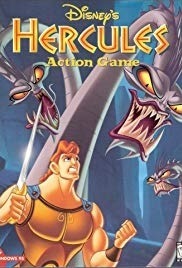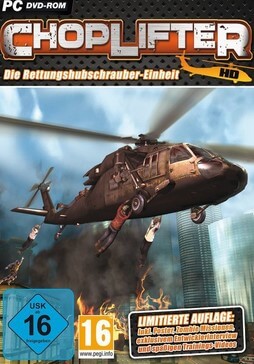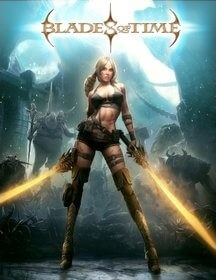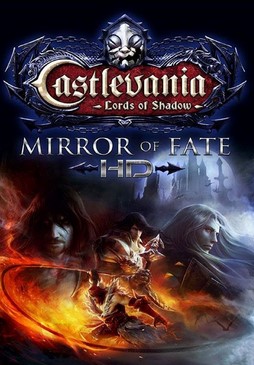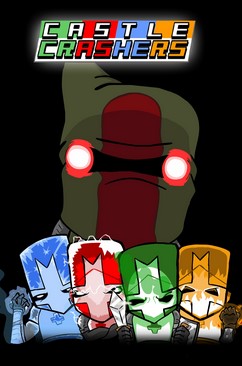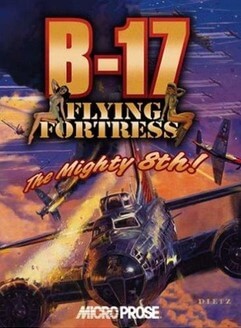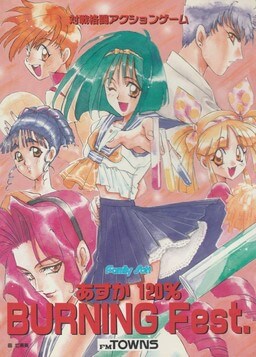Karateka is a 1984 martial arts action game by Jordan Mechner, and was his first published game, created while attending Yale University. It was originally programmed for the Apple II, then widely ported. The game was published in North America by Broderbund, and in Europe by Ariolasoft. Along with Swashbuckler (1982), Karate Champ (1984), and Yie-Ar Kung Fu (1985), Karateka was one of the earliest fighting games.
The player controls an unnamed protagonist who is attempting to rescue his love interest, the Princess Mariko, from Akuma's castle fortress. The game exhibits a combination of fighting game and side-scrolling beat 'em up elements. The player uses punches and kicks to defeat Akuma and his guards and make his way deeper into the fortress.
A 2012 remake, lead by Mechner, was released in 2012 as a downloadable title for the Xbox 360, Microsoft Windows, PlayStation 3, and iOS.
Gameplay
Karateka uses gameplay elements found in both side-scrolling 2D platformers and fighting games.
The player is introduced to the unnamed hero as he ascends a mountain into Akuma's fortress to rescue Princess Mariko. As the player directs the hero into the fortress, various foes appear and attempt to stop him. Once in a fighting stance, the player punches and kicks at each enemy, while trying to dodge their attacks. The player's health, shown by a bar on the bottom of the screen, loses a notch for every hit taken, though health is recovered slowly by not engaging in combat. Should the player lose all his health, the game is over, requiring the player to start again. The enemy's health bar is shown on the screen as well; once theirs is drained, the player has defeated him and can progress forward.
In addition to human enemies, Akuma occasionally sends his trained hawk to attack the player, which can be deflected with well-timed punches or kicks. There are some environmental hazards that the player can come upon, such as an open cliffside or a falling portcullis, which end the game immediately if not avoided. Throughout the game, cut scenes are shown, displaying such scenes as Akuma ordering his men to attack the player, and Mariko nervously awaiting her fate.
Eventually, the player will reach and face Akuma in a final conflict. Once Akuma is defeated, the player is able to rescue Mariko. If the player gets too close while still in his fighting stance, the princess will kill him in one blow. Once Mariko is freed, she and the player leave the fortress together.
An Easter egg is present on the Apple II floppy disk release. Though claimed to be sold as a single-sided disk, the reverse side of the disk included a full version of the game that would be rendered upside-down on the player's monitor. According to Mechner, this was done as a joke, causing naive users to call tech support and ask why the game was upside-down. Invariably, those users would receive the reply, "take the disk out, insert it right-side up, and reboot".
Development
Karateka was developed by Jordan Mechner while he was a student at Yale University as a side project between his classes. In learning to program on the Apple II, he had written a clone of Asteroids and a modified version he titled Deathbounce. He submitted Deathbounce to Brøderbund, which they declined. They provided Mechner with a copy of Choplifter, then one of the top selling games from Brøderbund. Mechner recognized from this game that he could pursue original game concepts instead of having to remake existing titles.
Using some of the graphic features that Choplifter provided, Mechner focused on a karate-themed game as a result of numerous factors which included his ongoing studies as a film student, his involvement in several film clubs at Yale, and having recently taken lessons in karate at the time. He also drew inspiration from Japanese Ukiyo-e woodblock print art, and the cinematic works of Akira Kurosawa, early Disney animated films, and silent pictures; he claimed that such works "convey such powerful emotion and atmosphere without a word being spoken". One of his goals was to combine cinematic techniques with game elements to create a novel experience; from this, Mechner programmed some of the screen wipes used in Seven Samurai as game elements. In reflecting on the game, Mechner stated that he did not consider the game as a "fighting game", but instead that of "a story-based game where the gameplay mechanic is fighting".
Mechner wanted to create fluid animations within the Apple II's eight frames per second capacity, but this was hampered by the presence of additional on-screen elements, such as one of the palace gates. Mechner found that he could not animate and play music (limited to one-note tones) at the same time, forcing him to adapt to these limitations. To create the animations, he used rotoscoping, the process of hand-drawing cartoons superimposed atop each frame of film of his karate instructor demonstrating various moves. Mechner credits his father with creating the music for the game. Work to complete the game took approximately two years, with Mechner submitting the game to Brøderbund during the later part of his sophomore year at Yale.
Reception
Sales of Karateka had surpassed 500,000 units by 2000. It was Broderbund's best-selling Commodore game as of late 1987. Compute! in 1985 called Karateka "a nominee for the Most Underrated Program of the Year. It's a program that must be seen to be fully appreciated". Although the reviewer criticized the player's necessity to restart from the beginning when defeated, It stated that the Apple II version "has by far the best animation I've seen in an Apple arcade game. The smoothness of the animation ... makes the game almost as enjoyable to watch as it is to play". Info rated the Commodore 64 version three stars out of five, praising the animation but disliking its simple and two-dimensional game play. The magazine concluded that it "needs more depth". Antic in 1986 liked its "cartoon-quality" graphics. Although critical of the "often slow" joystick control system, the magazine concluded that Karateka was "fun and extremely addicting". According to Dragon, "this game has a great plot, animation that'll dazzle your eyes, and player-controlled martial arts action."
